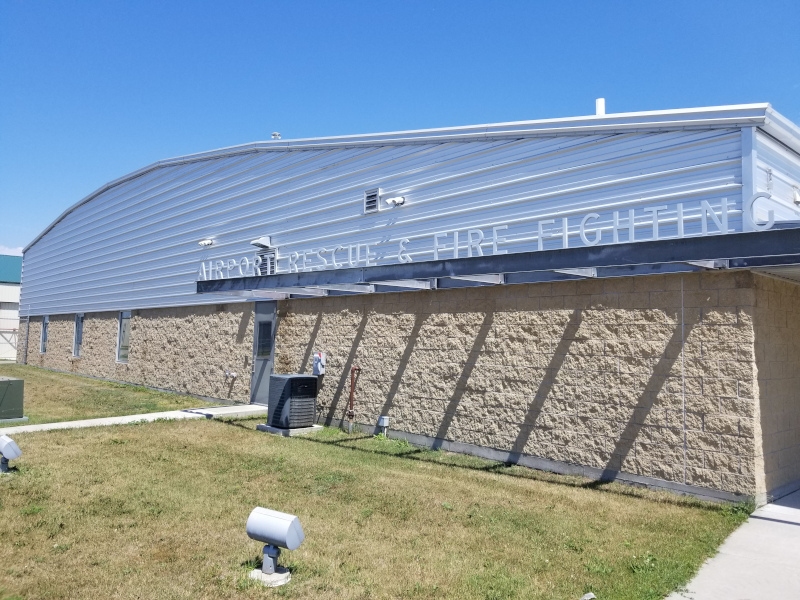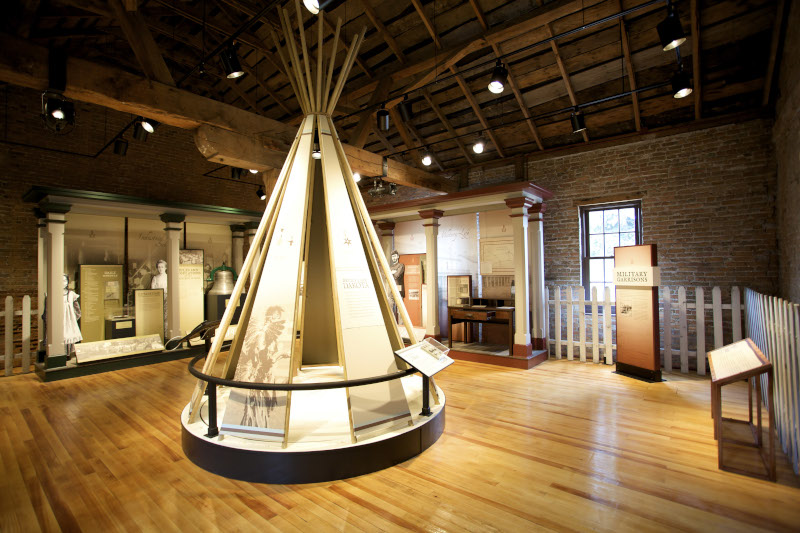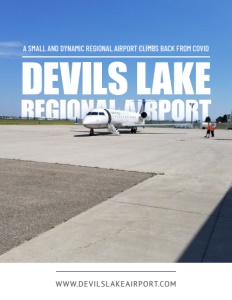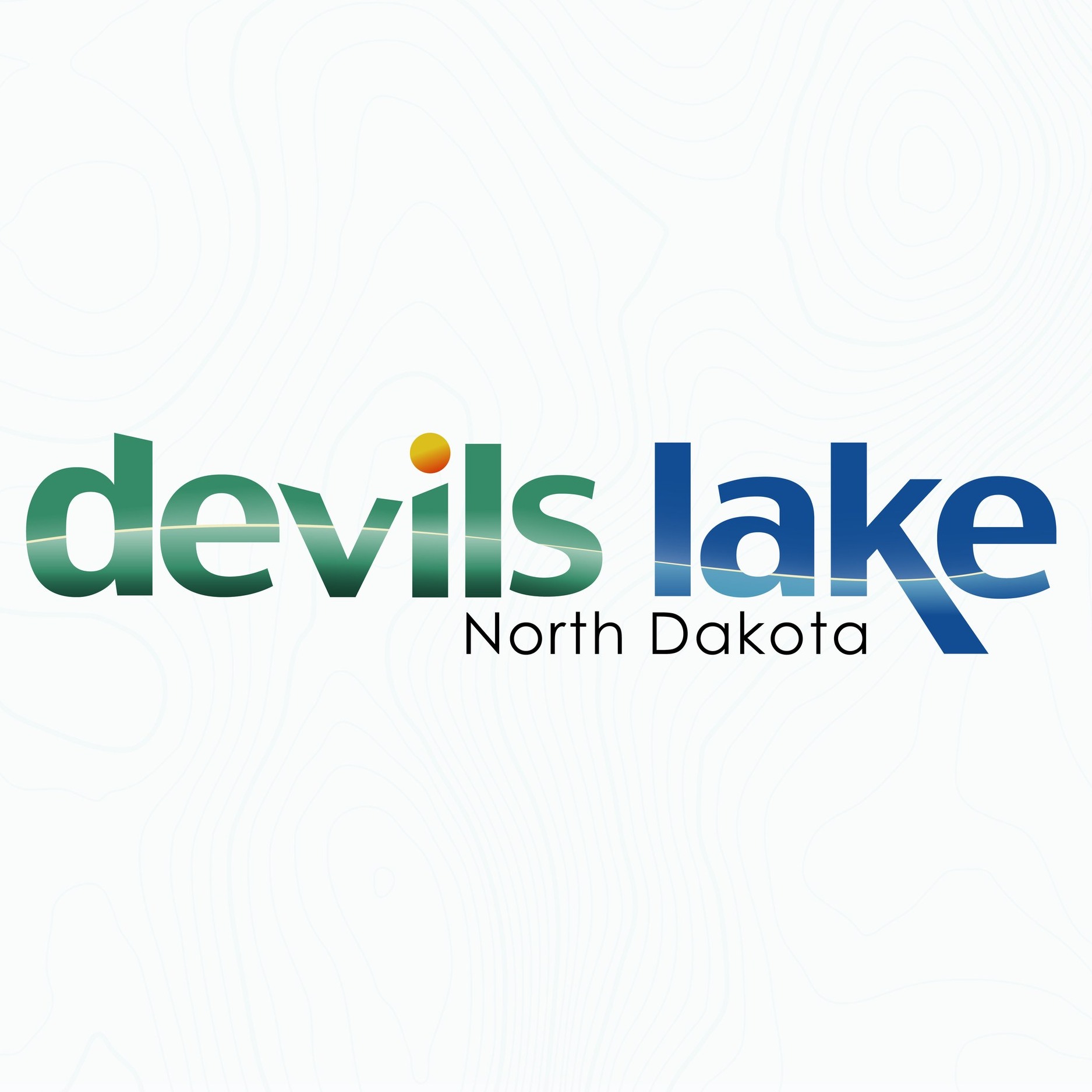Devils Lake Regional Airport
Devils Lake Regional Airport; A small and dynamic regional airport climbs back from COVID
Devils Lake Airport gets ready to unveil its updated passenger terminal as we fly into 2024
Devils Lake Regional Airport (DVL) is located in Ramsey County, North Dakota, about 80 miles south of the Canadian border and 95 miles west of Minnesota. It was officially dedicated in 1929 and was utilized by the U.S. military during World War II, after which it was returned to the City of Devils Lake to be operated by its municipal Airport Authority.
Covering an area of 730 acres, the public use airport has two runways with asphalt surfaces – 6,400 X 100 ft. and 4,314 X 75 ft. DVL is mostly used for general aviation, but is also currently served by one commercial carrier, SkyWest Airlines, which offers daily flights to Denver International Airport in Colorado and Jamestown Regional Airport some 100 miles south in Stutsman County, ND. Its passenger service is subsidized by the Essential Air Service, a U.S. government program enacted to guarantee that small communities are able to maintain a minimal level of scheduled air service that otherwise would not be profitable.
Airport supports the local economy
According to the North Dakota Aeronautics Commission, the Devils Lake Airport serves as a foundational component of the local economy by supporting the following activities: agricultural spraying, transport of high value equipment, air cargo, the North Dakota National Guard, emergency airlift, personal and business aviation, aerial photographers, aerial inspectors, flight training, and doctors traveling to see patients in the Devils Lake area.
Many non-aviation jobs in the community are reliant on the airport and the services it supports, which are also utilized by the students, faculty, and staff of nearby Lake Region State College, as well as the many tourists who visit the Devils Lake area, well-known as a top destination for fishing, waterfowl hunting, and whitetail deer hunting, as well as for visitors that camp, golf, snowmobile, and cross-country ski. Thus, the Devils Lake Airport helps to improve the quality of life for all area residents and businesses.
DVL is serviced by two FBOs: Foss and Meier Flight Service provides fuel and hangar availability, and Devils Lake Aero offers fuel, aircraft maintenance and repairs, and flight training. Other onsite businesses include Brekke Aviation, a full service agronomy retailer and aerial fertilizer, and Nutrien AG Solutions, a Canadian-based provider of agricultural products and services.
 Airport Director job is a perfect fit
Airport Director job is a perfect fit
Scott Cruse is DVL’s Airport Director. He received his pilot’s license at age 19 and has been flying ever since. “I’ve always been interested in aviation since I first got bit by the flying bug,” he states. “I worked for a local wholesaler here in town for 24 years. They sold out and a job happened to be open here at the airport in the operations area. At the time, I was a member of the volunteer fire department and the fire chief said, ‘You need to apply for that job; you’re perfect for it.’ So I did and I’ve worked in operations for about 15 years. In 2020, we had some issues with our airport director and the board asked me to be the interim Airport Manager. In January of 2021, they offered me the position full-time. That’s how I ended up here.”
Cruse says he loves his job but he does lament that chronic understaffing at the airport makes it hard to get everything done. He only has two operation workers on board, Joe Kraft and Russell Gerhardt, both of whom also double as aircraft rescue firefighters. “We’re understaffed by at least two people,” he states. “My workweek is Monday through Sunday without a doubt, and there have been very few weekends in the last two years that I have gotten even a day off. I call myself the fireman because every day, it’s putting out a fire and until I can get some people in here and get them trained, it’s a little crazy. Right now, we have two construction projects going on that keeps us busy – a terminal expansion project and finishing up a partial taxiway and apron reconstruction project. So, it’s been a real busy time.”
Airport projects and their budgets
And if the actual work at the airport wasn’t taxing enough, the intricacies of the funding processes to get all the work paid for is probably just as stressful. Cruse explains, starting with the promulgation of the federal Coronavirus Aid, Relief, and Economic Security Act, also known as the CARES Act, a $2.2 trillion economic stimulus bill signed into law in 2020, in response to the economic fallout of the COVID-19 pandemic:
“Devils Lake is a small airport and we were supposed to get an extra $159,000 out of the CARES Act. But we ended up getting way more money — $16.8 million.” The disparity caused a political kerfuffle in Washington and it took over a year for Congress and the FAA, which would be dispersing the funds, to come to an agreement. “So, after 14 months of discussions, the bottom line was we got to keep the funding, but we had to use the funds by June 2024 or we would lose them. So now, we’re 14 months behind in any planning that we could have done, but since there’s rarely any money to do terminals, we decided to expand ours with that money. We had several other projects that our consultants said we’d be able to do with the amount of money we were going to get: we need a new aircraft rescue and firefighting/snow removal equipment building because we’ve outgrown the one that we are in; we were going to expand our parking lot; improve our runway; and we had this apron reconstruction project planned. Well, the bids came in for our terminal expansion at well over double what was anticipated (the current budget for the renovation is $14.8 million). So it turned out we only got to do the terminal expansion with our CARES money, and our project list is still quite long with no funding to do them right now.”
Luckily for the airport, it was able to pay for the $3.1 million apron reconstruction project with a combination of AIP (Airport Improvement Program) funding from the FAA, which covered a third of the cost, a little over a million dollar grant from the City of Devils Lake, and another million-plus from North Dakota’s Aeronautics Commission. “So we were able to get that project going and it’s pretty much completed now,” Cruse reports. “We had five or six projects, but it’s boiled down to two, and only because of the substantial amount of help from those two organizations.”
The new terminal
DVL’s 6,148-sq.-ft. terminal was built in 2005 and the new upgrades will essentially double its size. It will add more vending machines for its commercial travelers, as well as an ATM and changing room for mothers and their infants. The lighting will be updated and there will be a bigger holding area for passengers as well as a new boarding bridge so that they won’t have to go outside to get to their flights in the harsh winter weather. “That’s going to be nice for North Dakota,” Cruse says in an obvious understatement. “One of the other big updates is we’ll be having a baggage carousel now. Other than that, the TSA screening area will be expanded quite a bit and, apparently, they have some new technology coming out, so we’ll be ready for when it comes. Overall, we’re just giving everybody a little more space.” An estimated completion date for the updated terminal is scheduled for late March to early April in 2024.

Fort Totten Historic Site Visitor Center
Regional carrier seeks new certification
Of course, just as one fire has been quelled, there’s always another one beginning to smolder. This conflagration concerns DVL’s commercial carrier, SkyWest Airlines, whose contract with the airport has expired, and who wishes to change its designation from a carrier that operates under the FAA’s Part 121 rules, which all the big airlines have to follow, to a charter service that operates under the less stringent Part 135 rules. This will allow the airline to reconfigure its Bombardier CRJ200 regional jet from 50 seats down to 30 and operate their flights on a public timetable open for anyone to book. It’s also an indirect way for SkyWest, the nation’s largest regional airline, to deal with a crippling pandemic-induced labor shortage. It lost as many as 1,500 of its captains to higher-paying, larger airlines over the last few years, when COVID caused a rash of retirements and resignations in their flight crews. When flights are classified as charters, carriers can use older or less experienced pilots who would not be eligible for hiring on large jets, making it easier for SkyWest to fill its cockpits.
SkyWest’s move has become a major flash point in the industry, attracting fierce opposition from the Air Line Pilots Association, the Association of Flight Attendants-CWA, and other aviation labor groups that claim the plan will cause flights to be less safe. SkyWest refutes that allegation, noting that even as a charter operation, it will continue to comply with all commercial safety standards and that scheduled charter flying is virtually indistinguishable from regular airline operations.
As of now, the U.S. Department of Transportation and the FAA are negotiating a possible agreement on new rules and regulations, which could take at least a year. Meanwhile, SkyWest’s contract with DVL is being extended monthly until either a new carrier is found to service the airport or SkyWest gets its charter certificate. “So, we don’t know what’s going to happen,” Cruse says. “It would be a tragedy if we lose those folks because of this rule change they’re trying to do. So, we’re up in the air; we don’t know what tomorrow brings until it gets here. Right now, it’s month by month. If they get the charter certificate, they will be splitting Jamestown, and Devils Lake will have its own routes. They will pull 20 seats out of their aircraft in order to comply with the charter service rules and we’ll be down to a 30-passenger jet, but it will be our own and we won’t have to mix with Jamestown. We’re hoping it works out and that the FAA and DOT can come to a favorable answer to this charter deal that they’re fighting about now. I guess time will tell. As a community, we really would not like to lose SkyWest as our carrier. They’ve been very good to work with and do a great job.”
Soaring high
Meanwhile, Cruse says that one of his current goals is to reach 10,000 enplanements a year. That would increase the airport’s AIP funding, which is currently set at $150,000 per year. “If we get to 8,000 boardings, that would bring us to $600,000 annually, and if we reach 10,000, that increases our funding to $1,000,000 annually. That can do great things for the airport.”
Key to achieving that goal, according to Cruse, would be convincing people that flying from a small regional airport makes economic sense when compared to flying in and out of a larger hub. “We have a lot of passenger leakage to the big cities east of here,” he opines. “But if people were to really sit down and do the math, they’d figure out that it really doesn’t cost a lot more to fly out of your local airport. I’ve sat down and done cost comparisons. After you’re done paying for driving, parking, and all those other odds and ends fees, you’re not paying a lot more for the convenience of getting off your plane, getting into your car, and driving home in five minutes. That’s one of the big keys I wish people would look at before they fly out of some other airport.”
All in all, Cruse says that he’s happy with the progress DVL is making. “Since March of this year, we’ve had monthly records in passenger enplanements and that’s what we’ve been itching to see for quite a while. So, things are looking up, and we hope they’ll get even better. For the size of our community, we have a very nice facility out here. There’s been a lot of effort put into it and it shows. And we’re excited to see what’s going to happen in the future.”
AT A GLANCE
The Devils Lake Regional Airport
WHAT: A public use, general and commercial aviation airport
WHERE: Ramsey County, North Dakota
WEBSITE: www.devilslakeairport.com
PREFERRED VENDORS
Forward Devils Lake Corporation – www.forwardevilslakend.com
Devils Lake in northeast North Dakota is a place to visit, learn and earn. The Devils Lake airport is the entrance to a destination that has World Class fishing and hunting and many opportunities to also earn a living.
The areas hunting and fishing opportunities are one reason many people who visit choose to make the Devils Lake region their home. World Class Walleye, Perch, White Bass and Northern Pike are a 5-minute drive from downtown Devils Lake. The Devils Lake region also offers World class waterfowl hunting due to the Devils Lake drainage basin that surrounds the 150,000+ acre lake.
Forward Devils Lake Corporation works in attracting and retaining businesses to the Devils Lake region. FDL offers many State of ND and local financial incentives including tax benefits, loan interest buydowns and cash grants to qualified business applicants who are interested in moving or branching out to the Devils Lake region.
North Dakotas Department of Commerce also has a significant amount of financial incentives that along with Devils Lake local incentives an potential company can use to reduce their capital and financing needs when locating to Devils Lake.
Getting here is easy with access to the world via the Devils Lake Airport with daily flight service to Denver International Airport or via train by Amtrak’s Empire Builder service from Chicago to Seattle.
Butler Machinery Company – www.butlermachinery.com
Butler Machinery Company has been committed to offering the best equipment, the latest technology solutions plus parts and service to keep you up and running. Founded in 1955 in North Dakota, third-generation family-owned Butler Machinery serves North Dakota, South Dakota, Clay County, Minnesota, Sidney, Montana, and Nebraska.
Devils Lake Hospital – www.chistalexiushealth.org
CHI St. Alexius Health Devils Lake is committed to providing quality health care in the Lake Region offering the best in emergency care, therapy services, critical care, maternity, and advanced radiology. For compassionate care, innovative healing and humankindness that makes us all feel at home, you can count on us.






